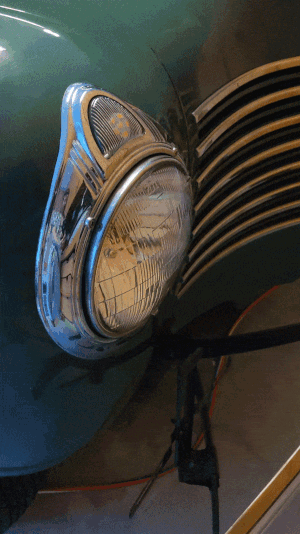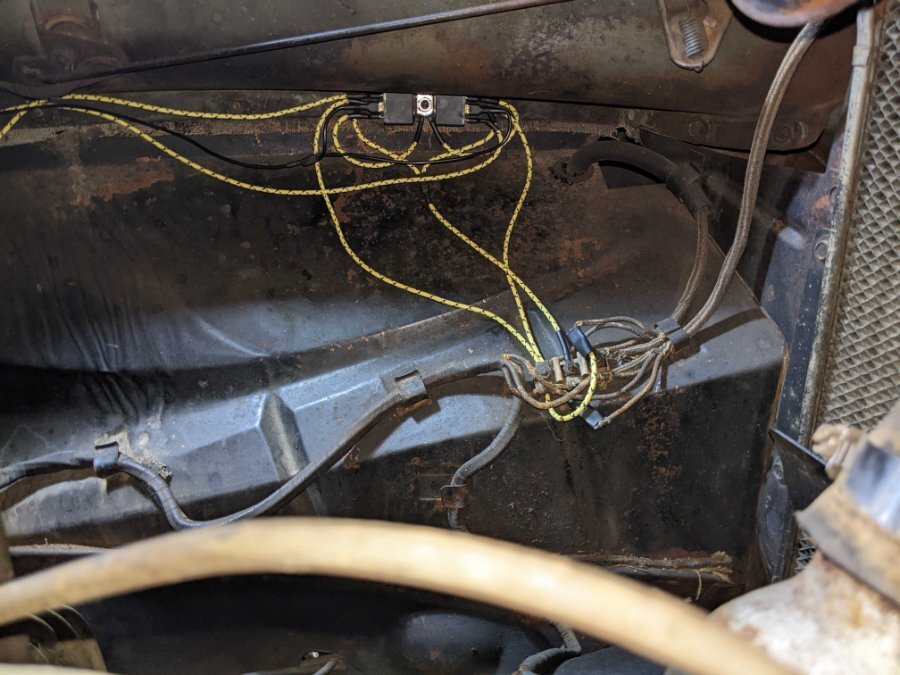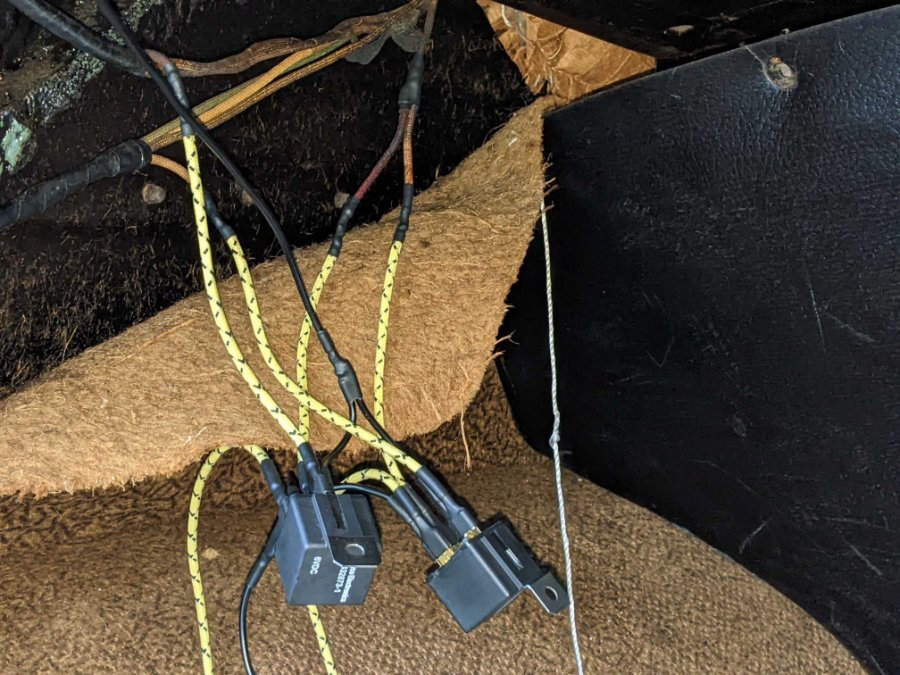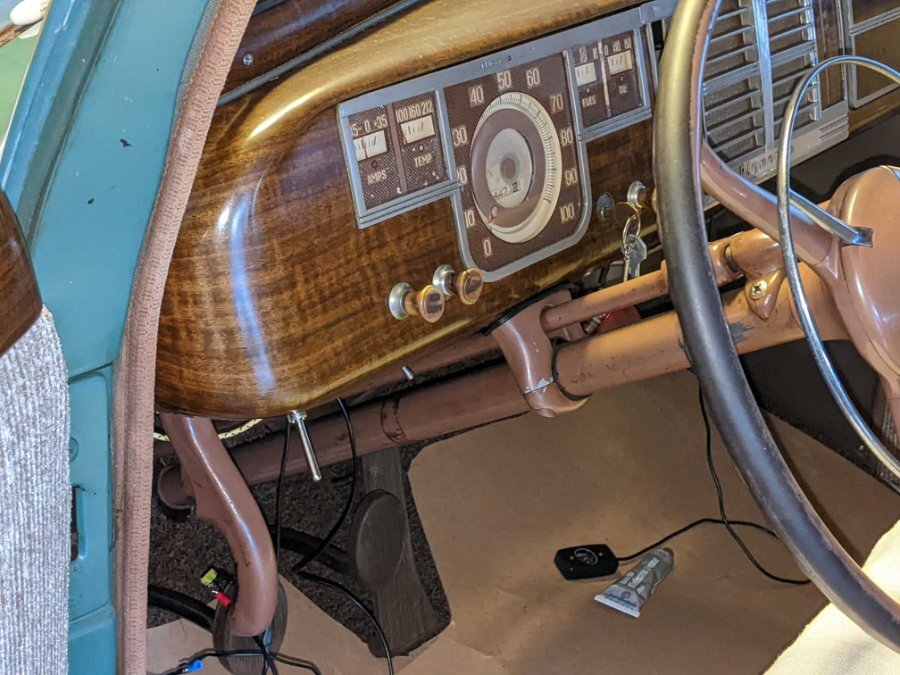
Ivan_B
Members-
Posts
1,176 -
Joined
-
Last visited
-
Days Won
13
Everything posted by Ivan_B
-
Ha, it is simply leaking over the acceleration pump inlet. I am 100% positive, you are overflowing just like I was, a few weeks ago. Take the seat and the needle out and inspect them for proper operation. Also, check your float, to make sure it actually floats and has no gas splashing inside If you really want to test this out: take the plugs out, disconnect the ignition coil, and ask someone to crank the engine with the carb cover removed, and see what happens.
-
Good point. I did not have any doubts (and never-ever specifically did the "panic stop" tests with any of my cars) before Joe mentioned that his apparently "good" looking line just let go. Now I have doubts ? Having a hose blow-up is something expected, this is why I always get new ones if I see any cracks or other signs of aging in the outer layer. But a steel line exploding, this is something completely new to me.
-
You can throw an extra tire in the trunk, if you plan to do that often. Just hang it over the bumper and push it away... ? But seriously, a road emergency kit (including a tow strap) could be useful.
-
That is certainly true. I am just thinking that the line pressure during stationary testing and road testing should be similar (under normal conditions). So if I press the pedal hard in the garage, that should be sufficient. ?
-
How do you know, did you took your float down a notch? That does not necessarily mean that the fuel is lower in the bowl, not at all These carbs do not have a drain plug, so we cannot see the actual fuel level during operation, unfortunately. I also adjusted my float to be lower, put everything back together, and then the carb started leaking even worse. The problem was not float/level related at all, the bowl needle just wasn't closing.
-
Now you have me worried, since I am pretty sure my lines are all original. Rear ones are somewhat corroded and i was planning to do them, maybe next season. How hard did you brake? Was the car new to you, at that time, or have you driven it in the past? I did push my pedal hard all the way to the floor, in the garage, etc. Did not skid-brake on the road, though, because the tires are tiny and old. But I don't see how it will make much difference, versus stationary testing, in terms of the pressure inside the line. ?
-
I was planning to do a more comprehensive write-up, if people are interested. Just let me finish it completely first ?
-
That is not technically the case, but it works and the majority probably cannot tell the difference anyway
-
Do you have a picture of the actual carb, showing where it is leaking from? It sounds like your bowl is simply over the top, again... Happened to me, recently
-
-
I can finally share a good thing: I just finished my turn signals! Well, almost, I still have to properly route the wiring and do some cosmetic adjustments. Sorry for the messy pictures, could not wait, since I am very excited that this is finally done and I no longer have to "wave" to people at intersections ? I am using 4 LED bulbs, 4 5-pin relays, LED flasher, 3-position toggle switch, and about 55 ft. of 16 gauge wire. My goal was to keep the car original, so I am simply flashing the existing lights (parking lights at the front, and the brake lights at the rear). I also attempted to keep all of the original wiring, so I connected my relays to the front connection plate at the driver's inner fender (for the front) and into the brake circuit splice in the trunk (for the back). Once I looked at the brake circuit wiring, I discovered that it was already broken and repaired (by tying the wires together) some time in the past, so I did not even have to cut anything It took me a whole day to do the wiring, and then another two days to figure-out why it did not work (the LED flasher, I got, turner-out to be defective so I had to order another one) ? You can do the same thing using just 2 relays and much less wire, if you are willing to alter the existing wiring harness. But I did not go that route. Here are the relays for the front bulbs under the hood: I am still waiting for the cloth electrical tape to arrive, so that I can properly wrap everything in the OEM style. It will be less noticeable and look more professional that way. The rear lights wiring looks a bit more messy: I will wrap the cables together, hang the relays onto the top shelf above the trunk, and cover it up with carpet, so no one will ever see this. Also, I ran out of the fancy cloth wire and had to use a plane black one. Here is the switch: I could not find a good-looking column-mounted one, so decided to use a simple toggle instead. I think it fits in very nicely and keeps the car looking stock. And no, I did not drill the dash. I mounted it in place of the heater fan blower switch, which I relocated into an extra available hole below the radio speaker in the middle of the dash (this way, both the driver and passenger can control the heater, which I think makes more sense than the original installation).
-
What makes you wonder? Is the line damaged, rusty, or just has dirty old fluid in it? How about all the other lines? That is actually every 2 years. That's scary, the line must've been heavily corroded carbon steel ? That's probably the best choice (not used by manufacturers because it is expensive). Flaring is really easy and, hey, who says metric is not right? ??
-
These are probably still around, not as popular as the medium frequency, but likely not completely extinct like the low frequency either.
-
That's true, if you are just interested in the original look, you can just buy a broken radio and install a modern player inside.
-
Did the guy gutted the entire radio and placed a BT player with 2 speakers inside the box? This is barbaric... For me, the point of having an old radio is to actually listen to the old radio. This is why I am specifically suggesting to use an AM transmitter, to transmit what ever you want into your old radio. If you do not actually intend to use the old radio, you can just install whatever into the box, or under the dash/seat at you wish. Do not even need to mess around with the existing radio at all Also, I couldn't help but noticing that the author did not heat-shrink any of his crimp connectors, somehow ?
-
Could be the case but not necessarily. I've seen some questionable work on my car, after the PO had it serviced by some "classic" mechanic, too. In this case, the mechanic should've done all of the things already suggested in this thread... Taking off the manifold makes no sense, unless there is a dead rat inside and the tail is sticking out of the carb, or something like that... I am afraid that if you want to own an older car, these days, you need to learn to do all the basic maintenance yourself.
-
In this case, I seriously doubt it's the clutch or anything drive-train-related, because it takes very little force for the engine to rotate just one rear wheel... Does it rew the same with and without load? Are you able to hook-up a tachometer to it, to see what RPMs you are actually getting?
-
Thanks, I've looked for these but they are wrong color. Mine were supposed to be ivory (I don't get it, by the way, all of the knobs/buttons in the car were ivory but the steering wheel and shifter knob are brown, for some reason ?). There is also a 3D model available for sale, which you can print and polish, but these are a very simple square profile with a metal casing. So I think it will be much easier (and cheaper) to fabricate these myself. I'll show the results once I get around to it. AM is fine, you can just get a small transmitter and have what ever broadcasting right into your radio (even another radio signal, if you wish). These transmitters were selling since the 60s, I believe, once the stations started switching to FM and some older radios were becoming incompatible.
-
I would go to a different mechanic ? Does it work if you gravity-feed it from a water bottle? That, alone, eliminates any of the fuel-system issues (unless the carb is messed-up, of course). So, the car would rew, but just would not get up to speed under load, right? How about this for a test: if you set it on a dyno (or just lift off the rear) are you able to push the speedometer where you need it?
-
Yes, that's exactly my plan as well. My radio is working, although the buttons have completely deteriorated. I'll need to get those replaced (just need to find some suitable color plastic, or maybe even use light-colored oiled wood to make it fancy) and give it a general cleaning and check-up. The radio is already sitting on the garage table, waiting for its turn, after I get a couple more important issues off the to-do list
-
My mounting holes are currently in the middle position, if I recall correctly. I might want to start with moving those. Thanks.
-
eBay is also a good place to check. By the way, are you sure you need one? Th OEM one is not going to tune into any stations either, unless to install an AM transmitter with it
-
1934 Plymouth PE Deluxe brake drum return spring(s)
Ivan_B replied to Mac McFarland's topic in P15-D24 Forum
Are you talking about the shoe return spring (usually one or 2 at each drum)? Have you tried e-bay for a used one? -
I am not tall, probably the new average 5'9". The problem, I believe, is that there is not enough room between the seat bottom and the door frame for my 11-size shoe, with a moderately pointy nose to fit through with a reasonable extra space, in the parallel to the car position. So it is all about the shoe size. I watched my feet carefully getting in - they are naturally at an angle, and fit through just fine. When I am exiting, however, i cannot place my feet at the same angle because it does not bent that way into the opposite direction ? So, if I literally back out of the car (turning the body the same way as when I was getting in) it works just fine. But this is weird.
-
Hi everyone. I am having a constant problem kicking the "kick" panel with my foot, each time I get out of the car. The panel also show sings of wear, to I am definitely not the first driver to do so ? The seat is all the way to the back, right now. And I believe that I've assembled the slides properly, after I took them apart for cleaning. At this time, the distance between the seat bottom and the door frame is about the same (front and back). This is a 2-door P10 sedan; looking at other 2-doors on the internet - the seat appears to be positioned the same. Which makes sense, so that people can get in both ways - front and back. Is anyone experiencing similar issues? I've noticed that this is only happening while I am getting out of the car, but not on the way in. So, I figured that if I get out of the car the same way I get in (back out of it, so to speak) then it works fine. No way that this was expected by the manufacturer, though, was it? ?



.gif.9d98a9356d17450e664fb7fd9a2fe23d.gif)


